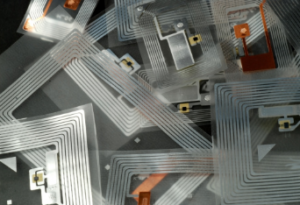You may be interested in an RFID tracker if you want to know where your assets are in real time. This system uses radio waves to communicate data with a handheld reader.
 RFID can track various things, including inventory, equipment and tooling. As a result, it can save time and money and increase efficiency.
RFID can track various things, including inventory, equipment and tooling. As a result, it can save time and money and increase efficiency.
Inventory Management
RFID is an inventory management system that uses tags attached to items to track them and manage their data. It’s often used in warehouses and manufacturing plants, providing real-time inventory-level updates.
It improves accuracy and efficiency by removing human error from tracking items. It also helps ensure that inventory is stocked at the proper levels, which is essential for making accurate decisions about production and purchasing.
Another benefit of RFID technology is that it allows workers to access information remotely, which can help speed up processes like order fulfilment. It can save time and reduce the likelihood of mistakes in the process, as employees can quickly bring together all necessary products for each order.
An inventory system using RFID can be a cost-effective solution for small businesses, as it is easy to implement and will save you money in the long run. It can also benefit companies with a large amount of inventory since it can help them stay on top of their supply chain.
If you want to learn more about how an RFID tracker can benefit your company, contact Aeologic Technologies today! We’ll be happy to answer any questions and help you get started with an inventory system that works for your business.
In the world of supply chains, the lack of visibility into inventory is a significant problem. As a result, many companies use RFID tracker technology to improve their operations and save money.
Asset Tracking
RFID asset tracking systems are a powerful tool that can increase efficiency and save time. They also reduce errors, prevent theft and bring accountability to businesses.
Asset tags or labels are placed on equipment, tools or other assets that need to be tracked, and an RFID tracker picks up the location of these tags. This information is then relayed back to a database so that it can be logged and managed.
These works are straightforward: the RFID tag carries information such as the name of the asset, its serial number and other relevant details. This information is then logged into the database and can be accessed by anyone in your organisation that needs it.
Active RFID tags transmit their signals, allowing longer read ranges and more features. They can also be designed to have additional functions, such as temperature and humidity sensors, which can help ensure the accuracy of the data being logged.
Passive tags are cheaper but cannot transmit their signals and have a much shorter range than active or semi-passive tags. They are also more likely to run out of battery power, which can be problematic.
They are also often less effective at tracking high-value or delicate items, as they are prone to damage when mishandled. They can also be prone to be lost or misplaced, which can lead to theft and insurance claims.
A fixed RFID reader, in contrast, is a selected device that can be placed strategically on your premises and automatically tracks an asset’s establishment using an RF signal. It can be very powerful, as it is more efficient than handheld RFID readers and more robust because it can be placed in areas that are difficult to locate or reach.
Employee Tracking
RFID trackers are often used to track employee badges in a facility, but they can also monitor the movement of assets and other equipment. As a result, the technology enables organisations to monitor asset usage and streamline productivity.
These systems also help employers ensure lone workers are safe in dangerous areas. For example, badges containing motion sensors can signal alert managers if a person is passing out or stops moving, instantly indicating danger and dramatically reducing emergency response times.
The software that powers these systems can also be custom designed to meet specific compliance and reporting requirements. The system will generate reports and dashboards that provide valuable insight into staff performance.
In addition to tracking badge locations, RFID tracker systems can help employers retrace the steps of workers who aren’t checking in on time or who stray into a restricted area. It allows security staff to identify unauthorised users and ensure they are not harming the company’s assets or reputation.
A significant benefit of this technology is that it does not require line-of-sight to be effective, making it useful in situations where traditional barcodes or RF readers aren’t available. It also means that employee attendance can be recorded and accessed at a moment’s notice without requiring manual input or employees to be in the exact location simultaneously.
Security
Security is vital for every business, and an RFID tracker is a powerful tool for securing goods and people. It helps retailers keep track of stock and prevents theft while providing inventory managers with accurate data to improve the quality and speed of production.
It can also help identify and locate items in a warehouse where thousands of products may be stored. It can reduce staff hours spent counting and identifying products and ensure that stock is not lost.
The final way to keep your RFID data safe is by using a kill code, which means that if a hacker tries to access your information, they can’t do it. It can be especially useful if your company has limited computational capabilities or is subject to security breaches.